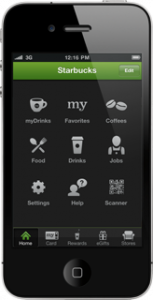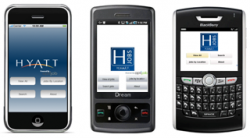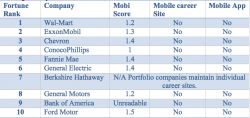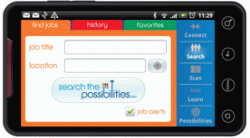 by Dr. John Sullivan and Master Burnett
by Dr. John Sullivan and Master Burnett
It’s 5:30 a.m., and Joe McHenry, a 36-year-old international tax manager who works in New York City, wakes up, checks his e-mail, Facebook, and Twitter activity from his smartphone all before getting out of bed. By 6:45 a.m. he’s dressed and walking to the train station for his 40-minute commute into the city. From the moment he grabs a seat to the moment he steps off the train, his eyes are glued to the four-inch screen of his personal onramp to his digital life and the information superhighway. Throughout the day, he’ll spend another 4.25 hours engaging with the world through it.
Now consider this: you’re trying to recruit Joe McHenry. He has blown off your e-mails, your voicemails, and even your InMails. This morning, however, his friend who used to work for your firm retweeted a link to the job you’re recruiting for, and it appeared on Joe’s Facebook wall. While on the train, Joe’s curiosity got the best of him and he clicked the link. The browser on his smartphone opened and started to load a page from your career site. He waited and waited, but the page just wasn’t loading. He figured, “I’ll try the parent domain instead.” He typed in yourcompany.com and up came your company’s WAP site, nicely formatted and clean. He looked for the link to jobs, but couldn’t find it. Frustrated, he abandoned his curiosity and went back to catching up with his friends on Facebook.
Sound like a poor experience? Only eight of the Fortune 100 have a career site that detects mobile browsers, and sadly, few of them optimize content for mobile visitors. Among those companies that have invested in building a mobile website, jobs content is more often than not missing. An infant-sized handful have done something for the mobile audience. They have built a careers app users can install on their phone or built out a mobile careers site. You can check out the progressive few: Raytheon, Starbucks, McDonald’s, PepsiCo, Hyatt, and AT&T.
The New Normal
Joe McHenry’s lifestyle is the new normal.
As of September, 40% of U.S. cell phone users carried a smartphone, and predictions show that by year’s end a majority of the  population will have one. Around the world, smartphones are quickly becoming the primary means of engaging via the Internet, with the PC being downgraded to second place. Factor in the lack of IT controls on personal devices and you can see why everything that is personal online will soon be done via mobile. Whether or not your firm blocks Facebook doesn’t matter when you carry Facebook in your pocket. Today, a majority of the traffic to Facebook already comes from mobile devices. According to Richard Cho, Facebook recruiting manager, mobile users are two times more engaged than non-mobile users.
population will have one. Around the world, smartphones are quickly becoming the primary means of engaging via the Internet, with the PC being downgraded to second place. Factor in the lack of IT controls on personal devices and you can see why everything that is personal online will soon be done via mobile. Whether or not your firm blocks Facebook doesn’t matter when you carry Facebook in your pocket. Today, a majority of the traffic to Facebook already comes from mobile devices. According to Richard Cho, Facebook recruiting manager, mobile users are two times more engaged than non-mobile users.
A new Global Mobile Workforce Report from iPass based on input from 3,100 global workers indicated that 91% of those with mobile access to the Internet check in with their digital lives during the unoccupied moments of the day. “Not only were they checking their email first thing in the morning, 38% worked before their commute, 25% during their commute, and 22% worked again on the way home — each and every day. And they didn’t stop when they got home either. For many, work is a never-ending cycle; 37% work each evening — 33% work again when they arrived home, 26% after dinner, and 19% said they work again after they put their children to bed at night.”
A Blunder of Epic Proportions
Think of it. Precisely during the time periods when individuals are the most likely to be free, they don’t have access to mobile-friendly career information. If they find out about an opening from a friend on a social network, in most cases the link provided will bring them back to your ATS, which does nothing to support the mobile user. If they want to watch videos or read blogs, their browser will encounter technical challenge after technical challenge. If they are on an iPhone or Android, they may see your site, but they will be pinching, flicking, scrolling, and getting irritated the entire time. It’s important to realize that mobile-capable candidates aren’t stupid; not providing mobile access is an employer-brand bruiser for most companies, but if you are a tech firm, it’s an employer-brand killer.
“HR’s dirty little secret – you can’t get there from here!”
How Bad Is Your Site?
Among the Fortune 100 mentioned earlier, only one allows you to actually apply from a mobile device. That one is Raytheon. Among tech companies, some of the worst performers include Microsoft, Apple, and RIM, all of whom make mobile operating systems and browsers!
Using the mobiReady testing tool that tests the suitability of site design for mobile devices, you can see just how poorly the recruiting professions effort has been to court the mobile audience. The tool performs numerous tests, but assigns a score of one (horrible) to five (excellent) based on the total experience. Among the Fortune 100 the highest score for the primary career site was achieved by McKesson (AT&T’s site did not redirect the tool to its mobile website or it would have received a 5.0.)
Among the top ten Fortune firms, the scores looked like this (click to enlarge):

Why You Must Embrace Mobile NOW
The dominance of the mobile device has been a trend barreling toward us with considerable speed for some time. I first wrote about it just over three years ago when I proclaimed the mobile phone “The Most Effective Recruiting Communications Platform.” The recruiting profession has had more than ample time to prepare, but the stat’ prove few took action. Some of the reasons you can’t wait any longer to embrace mobile include:
- Mobile communications receive response rates unheard of for other communication channels. Well-designed SMS campaigns can achieve 100%-plus response rates!
- Smartphones provide ubiquitous access to digital communication/engagement tools. Global research by mobile advertisers found that 67% of smartphone users are never more than three feet from their device and NEVER turn it off!
- When people get bored or need a distraction, it’s what they turn to!
- The smartphone does what no other device on your desk can do: it unifies all communications, including voice calls, video calls, text messages, recorded videos, pod asts, social media messaging, email, instant chat/messenger, and Internet content. This range of message options allows you to cater to your prospects’ lifestyle versus forcing them to engage in your administration-centric process.
- The current generation is so hooked on them that messages not accessible from a mobile device may never be seen.
- If you’re targeting innovators and first adopters (both of which prefer Android), and the technology savvy, you have no choice.
- If you’re recruiting for a temporary or contract job, the rapid response rate of mobile makes the mobile platform the ideal choice.
- Personal phones are not subject to idiotic IT policies. The employees of your competitors can engage with while on the job without fear of being snooped on!
- Referral conversations happen in the field. It’s only logical the process should start there!
- As QR codes (quick response) become commonplace, the mobile phone will become critical in driving people to your information.
- If you are successfully messaging or posting jobs on Twitter, you are already aware that your audience is hooked on the mobile platform.
- Nothing shows the candidate quicker that your firm isn’t an innovator or a technology leader than ignoring the mobile phone platform.
- Google has already started to improve the ranking of sites that support mobile in search results over those that do not. Other engines will follow.
- The application capabilities afforded by the smartphone enable a perverse world of opportunity to make the recruiting process personal, local, engagement-centric, media rich, real-time, etc.
A Grander Opportunity
While the vast majority of recruiting professionals are primarily concerned with closing requisitions as quickly as possible, there are a significant portion who also consider the impact of their efforts on the greater productivity of the workforce. If you embrace mobile for no other reason, do it for this one: workers capable of work-shifting — i.e. working while mobile — are more productive, so stuffing your pipeline with candidates who have proven their mobile adeptness will positively impact your firm’s long-term productivity. Don’t take our word for it. Read the iPass Global Mobile Workforce Report and learn that among mobile workers:
- 75 percent worked more hours because of the increased flexibility in when and where they could work
- 55 percent worked at least 10 or more hours each week
- 64 percent felt they were better able to balance their workload with personal commitments
- 54 percent felt their productivity was substantially improved
Final Thoughts
 Kat Drum was working as the global employment brand manager at Starbucks (she is now with RIM) when it launched its first mobile e-commerce application which had a tab for Jobs at Starbucks included. While presenting at mRecruitingcamp in September, she indicated that “Starbucks produced hires within a few weeks of launching the app.” While PepsiCo’s efforts are just a few months old, Chris Hoyt, who leads talent Engagement & marketing, presented evidence of mobile’s value at the same conference, juxtaposing PepsiCo’s mobile efforts against more traditional sourcing channels. Hoyt elaborated, saying that the early evidence justifies the initial investment and that mobile will be a considerable part of PepsiCo’s strategy for sometime.
Kat Drum was working as the global employment brand manager at Starbucks (she is now with RIM) when it launched its first mobile e-commerce application which had a tab for Jobs at Starbucks included. While presenting at mRecruitingcamp in September, she indicated that “Starbucks produced hires within a few weeks of launching the app.” While PepsiCo’s efforts are just a few months old, Chris Hoyt, who leads talent Engagement & marketing, presented evidence of mobile’s value at the same conference, juxtaposing PepsiCo’s mobile efforts against more traditional sourcing channels. Hoyt elaborated, saying that the early evidence justifies the initial investment and that mobile will be a considerable part of PepsiCo’s strategy for sometime.
While a few leading-edge firms (check out Verizon, Fidelity, HCA, and the U.S. Army in addition to those already referenced) have tried the mobile platform, most recruiting leaders have delayed the decision to “go mobile.” The lack of action can be attributed to ignorance about what going mobile would require, lack of funding and lack of desire to find it, general apathy, and lack of support from the ATS community. But the time to realize the cost of not going mobile far exceeds the cost of doing so is upon us. The mobile workforce is the future, and the future is what most firms try to dominate!